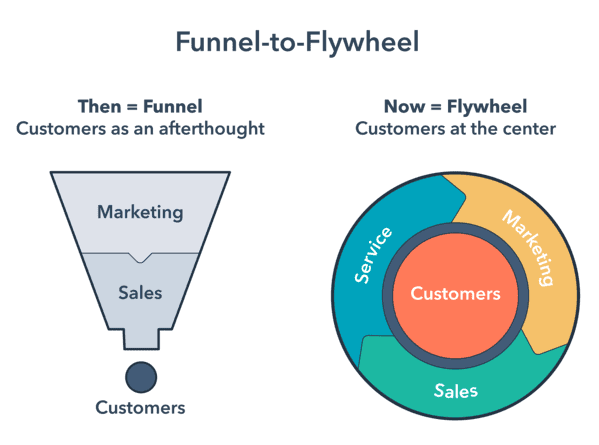If SaaS subscription billing models were people, you could argue that Freemium is a freeloader.
They are comfortable with what you gave them, have no incentive to pay for anything beyond that and may or may not want more of it. But there’s a contradictory-sounding way to get the most out of these users.
Good behavior and freeloading don’t sound like they go together, but it’s possible to freeload respectfully: Don’t complain about what you’re getting and be as invisible as possible.

If you take a closer look at your virtual couchsurfers’ behavior, you’ll likely find that this concept applies to your own freemium users.
As a subscription-based business, you might have asked yourself at least once before if it’s worth it turning these freeloaders into productive members of society (i.e. paying subscribers).
But converting a freemium user into a customer is not the only way for them to earn their keep. A well-behaved freeloader can pay you dividends — you just have to know how and where to engage them.
COGS in Your Machine
If you are a subscription business, you are likely well acquainted with the cost of goods shipped (COGS) metric.
Just in case you’re not, COGS refers to the direct costs attributable to the production of goods sold. In Generally Accepted Accounting Principles (GAAP) this typically includes operational expenses such as the cost of the materials used in creating the good along with the direct labor costs used to produce the good.
In the case of a subscription business, this takes into account costs such as application hosting and monitoring costs, customer support and account management costs, software license fees for products embedded in the application and costs of subscriptions.

Freemium customers are – pun intended – cogs in your machine that also contribute to your COGS. It’s natural to want to convert them into paying customers to increase margins, but it’s a fool’s errand.
Don’t waste your time chasing the customers who are the least likely to pay for your product — freemium to paid conversion rates typically hover between two to five percent.
Instead, flip your sales funnel around and take the flywheel funnel approach to get the freeloaders engaged with your product in other ways.
What Is the Flywheel Sales Funnel?
In a traditional sales funnel, the enterprise and small-medium business (SMB) sales teams are responsible for finding external leads and the midmarket teams focus on inbound leads. The flywheel model flips this around to help generate momentum as a flywheel would.
Midmarket and enterprise are inbound teams that focus on upselling existing customers and SMB focuses on external efforts that eventually feed the inbound teams opportunities to engage with the install-base.

In this approach, your customers don’t stop moving when they reach the bottom of a funnel. You’re constantly moving them along different opportunities instead of leaving them to languish at the end of the traditional funnel progression.
If you’re operating on the freemium model, odds are you also have plenty of paying users and a scalable product. While freemium customers might seem ripe for revenue, resist the urge to chase them with install-base marketing emails about buying the product. They are unlikely to convert as it is, and sales-related communications will only drive them away from your product completely.
Focus instead on providing them information that will help them be that well-behaved freeloader:
- Turn them into promoters on social media with a hashtag campaign.
- Offer them helpful information about the product’s free tier through in-app messages or marketing emails.
- Create a cadence of informing them about updates to the product or company and even general information they may find helpful for their daily lives through an email newsletter.
- Ask them to contribute reviews about your product on popular review sites like G2 Crowd or Capterra.

These activities will keep you top-of-mind for freemium users — something that is still a tangible business benefit even if they are not paying for your product.
For instance, if you have a note-taking application designed to help busy people stay organized, you can send out a monthly newsletter that shares strategies to handle stress and time-management.
A freemium user might not subscribe to your service, but if they receive this newsletter, they may remember you the next time they’re stressed: “What was that one breathing technique that was in ACME Co.’s newsletter last month?”
They might tweet about you, mention you to their friends or write about you in their next blog post. And who knows — maybe this time around you will catch them at an opportune time when they are more willing or prepared to purchase your product.
Although the conversion rates are low, what do you have to lose? Even if your freemium freeloader doesn’t decide to purchase your subscription, you have still gotten something valuable out of engaging them — a promoter and advocate for your product. And all the while, revenue operations and COGS for your paying customers is not affected.
Freedom To Freemium
This article is not about whether you should or should not offer a freemium model. There are good arguments for and against freemium models for SaaS businesses — Maxio has written about both sides of the coin before.
What I am focused on is how to make the most out of freemium users if you have them.
These customers aren’t necessarily motivated to take any action, so you are better served focusing your sales efforts where the money is.
Let your freemium users live their best life — give them the tools and information they need to use your product effectively, but don’t push them.
The less work you propose they do to engage with you, the better the odds are they will take some kind of action to help you generate awareness at the starting point of the flywheel, and ultimately, contribute to margins in other ways than recurring revenue.



